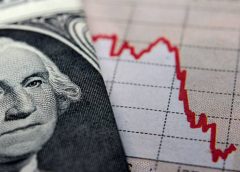According to the National Bureau of Economic Research (NBER), the institution that dates the peaks and troughs of the business cycles,
A recession is a significant decline in economic activity spread across the economy, lasting more than a few months, normally visible in real GDP, real income, employment, industrial production, and wholesale-retail sales. A recession begins just after the economy reaches a peak of activity and ends as the economy reaches its trough.1
In the view of the NBER dating committee, because a recession influences the economy broadly and is not confined to one sector, it makes sense to pay attention to a single best measure of aggregate economic activity, which is real GDP. The NBER dating committee views real GDP as the single best measure of aggregate economic activity.
We suspect that on the back of the NBER’s much more general definition, the financial press as a shortcut introduced the popular definition of a recession as two consecutive quarters of a decline in real GDP. Also, by following the two-quarters-decline-in-real-GDP rule, economists don’t need to wait for the final verdict of the NBER, which often can take many months after the recession has occurred.
Regardless of whether one adopts the broader definition of the NBER or the abbreviated version, these definitions are actually failing to do the job.
After all, the purpose of a definition is to establish the essence of the object of the investigation. Both the NBER and the popular definition do not provide an explanation of what a recession is all about. Instead, they describe the various manifestations of a recession.
The Problem with Measuring GDP
Another grave problem with both the abbreviated and the NBER definitions is that recession is defined in terms of real gross domestic product (GDP), which supposedly mirrors the total of final real goods and services produced.
To calculate a total, several things must be added together. To add things together, they must have some unit in common. However, it is not possible to add refrigerators to cars and shirts to obtain the total of final goods. Since total real output cannot be defined in a meaningful way, obviously it cannot be quantified. To overcome this problem economists employ total monetary expenditure on goods, which they divide by an average price of those goods. But is the calculation of an average price possible?
Suppose two transactions are conducted. In the first transaction, one TV set is exchanged for $1,000. In the second transaction, one shirt is exchanged for $40. The price or the rate of exchange in the first transaction is $1000/1TV set. The price in the second transaction is $40/1shirt. In order to calculate the average price, we must add these two ratios and divide them by 2. However, $1000/1TV set cannot be added to $40/1shirt, implying that it is not possible to establish an average price.











Leave A Comment